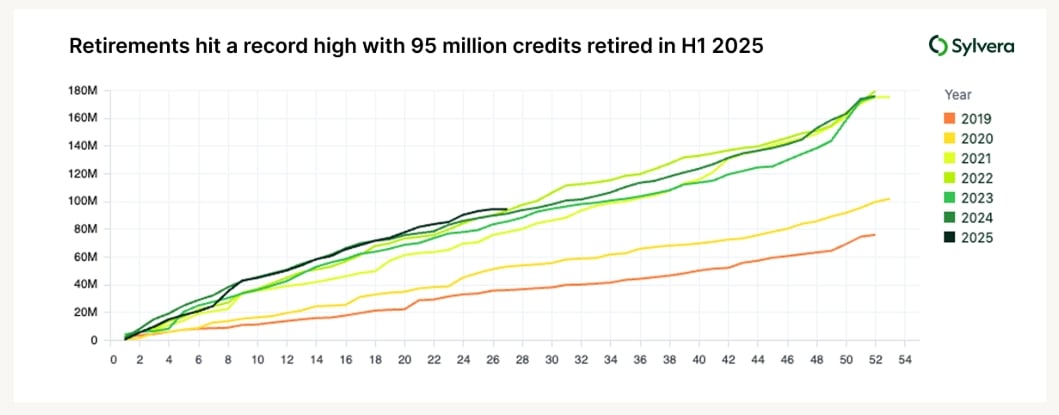Carbon Neutrality !
In an era where “carbon neutrality” is a buzzword on the corporate agenda, the reliance on carbon offsets has intensified. These credits are intended to compensate for the emissions produced by companies by funding equivalent carbon dioxide savings elsewhere. However, this approach is fraught with complexities concerning the validity and impact of such projects. The surge in corporate carbon offsets utilization demands a closer examination of their role within broader climate strategies—is it a step forward in combating climate change or a sidestep around more effective measures?
Unpacking Carbon Offset Mechanisms
Recent studies underscore a troubling trend—many carbon offset schemes promise more than they deliver. For instance, research from Boston University in 2025 elucidated that several forest carbon credits failed to provide the expected climate benefits often due to weak verifications and inflated claims of emissions reductions. Similarly, data from the Kleinman Center highlighted over-reporting issues within abatement projects, which compromise the market’s integrity. These revelations suggest an urgent need for reform within carbon credit verification processes to ensure transparency and efficacy.
Corporate Responses and Market Dynamics
Insights from industry leaders suggest corporations are increasingly aware of these challenges. A panel discussion involving executives from McKinsey, Salesforce, and Chevron highlighted a shift towards demanding higher integrity credits and transparent reporting practices. This aligns with market trends showing a 9% increase in high-quality carbon credit retirements as per 2025 records from carboncredits.com. Yet, despite advancements, the CFA Institute’s 2025 report criticized the overarching voluntary market for its lack of standardization and prevalence of greenwashing activities.
Technological Innovations Enhancing Verification
One promising development in addressing these challenges is the integration of cutting-edge technologies like satellite data and blockchain into the verification process of carbon offset projects. These tools offer potential for more accurate real-time audits of project outcomes and traceability in credit transactions, aiming to fortify trust and efficiency in the market.
1. KEY FIGURES:
- Carbon credit retirements hit 95 million in the first six months of 2025, a 9% increase compared to previous records, indicating growth in carbon market activity focused increasingly on long-term benefits rather than just offsets (Source: carboncredits.com)[1].
- Studies suggest many forest carbon credits have questionable climate benefits, with some credits found to be “dubious at best” due to weak verification of actual emissions reductions (Source: Boston University study, 2025)[2].
- Research highlights that true emissions savings often fall well short of promised reductions due to over-reporting by abatement projects and lack of rigorous quality differentiation in credits (Source: Kleinman Center, 2025)[4].
2. RECENT NEWS:
- 2025-07-03: Carbon market growth is aligning voluntary and compliance markets, with increasing demand for high-integrity credits and new standards expected to redefine valuation of carbon removal projects (Source: carboncredits.com)[1].

- 2025-05-15: Boston University and Clean Air Task Force reveal shortcomings in forest carbon credit schemes, calling for enhanced verification and guidelines to increase their reliability (Source: Boston University)[2].
- 2025-06-07: Industry leaders from McKinsey, Salesforce, and Chevron discuss challenges in corporate carbon strategies, emphasizing transparency, balancing internal reductions vs offsets, and the need for standardized best practices (Source: Sylvera)[3].
3. STUDIES AND REPORTS:
- Boston University & Clean Air Task Force (2025): Forest carbon credits often fail to deliver promised emissions offsets due to poor additionality, permanence, and leakage controls; recommend tighter standards and improved market governance to boost credit quality[2].
- Kleinman Center, UPenn (2025): Analysis shows that carbon offset projects tend to overstate reductions; proposes applying econometric methods to identify high-quality projects and improve market efficiency through better design features[4].
- CFA Institute Report (2025): Voluntary Carbon Market suffers from mistrust, lack of standardization, and greenwashing; recommends harmonized international standards, unified carbon pricing, and blockchain for transaction traceability to restore integrity and effectiveness[5].
4. TECHNOLOGICAL DEVELOPMENTS:
- Use of satellite data and remote sensing to audit carbon offset projects for real-time verification of forest growth, deforestation, and permanence of carbon storage (implied in studies and market trends)[1][2].
- Deployment of blockchain and digital registries for transparent tracking of carbon credit issuance, ownership, and retirement to reduce double counting and enhance market trust (CFA report, 2025)[5].
- Introduction of Performance-Adjusted Carbon Metrics (PACM) credits, expected in late 2025, to incentivize long-term, durable carbon removal over short-term avoidance offsets (carboncredits.com)[1].
5. MAIN SOURCES:
- https://carboncredits.com/carbon-removal-in-2025-are-you-investing-in-the-right-climate-credits/ — Market trends and CEO insights on carbon removal demand and integrity in 2025.
- https://www.bu.edu/articles/2025/do-forest-carbon-credits-work/ — Critical study assessing the effectiveness of forest carbon credits and recommendations for improvement.
- https://www.sylvera.com/blog/creating-a-successful-corporate-carbon-strategy — Industry panel insights on challenges in corporate carbon strategies and offsets use.
- https://kleinmanenergy.upenn.edu/research/funded-projects/improving-the-integrity-and-efficiency-of-carbon-offsets/ — Academic research on offset market design and quality measurement.
- https://rpc.cfainstitute.org/research/reports/2025/enhancing-the-voluntary-carbon-market — Comprehensive report on voluntary carbon market gaps and solutions, including technology and policy recommendations.
—
This synthesis shows that while corporate carbon offsets remain a widely used tool, significant concerns persist about their actual climate impact, verification integrity, and social/ecological consequences. These issues risk offsets serving as a license to pollute if not rigorously reformed and integrated with genuine emissions reductions and community-led conservation. Recent market and technological innovations, alongside evolving regulations, aim to improve credibility, but experts emphasize that absolute emissions cuts and demand reduction remain essential complements to any offset strategy.
Other references:
carboncredits.com – Carbon Removal in 2025: Are You Investing in the Right Climate …
bu.edu – Do Forest Carbon Credits Work and Actually Help the Environment?
sylvera.com – Creating a successful corporate carbon strategy in 2025 – Sylvera
kleinmanenergy.upenn.edu – Improving the Integrity and Efficiency of Carbon Offsets
rpc.cfainstitute.org – Enhancing the Voluntary Carbon Market: Gaps & Solutions
offsetguide.org – Source
files.sciencebasedtargets.org – Source
nature.com – Source
guidance.cdp.net – Source
theguardian.com – Source
interactive.carbonbrief.org – Source
features.propublica.org – Source
sciencedirect.com – Source
ncbi.nlm.nih.gov – Source
reuters.com – Source
nature.com – Source
link.springer.com – Source
link.springer.com – Source
frontiersin.org – Source



